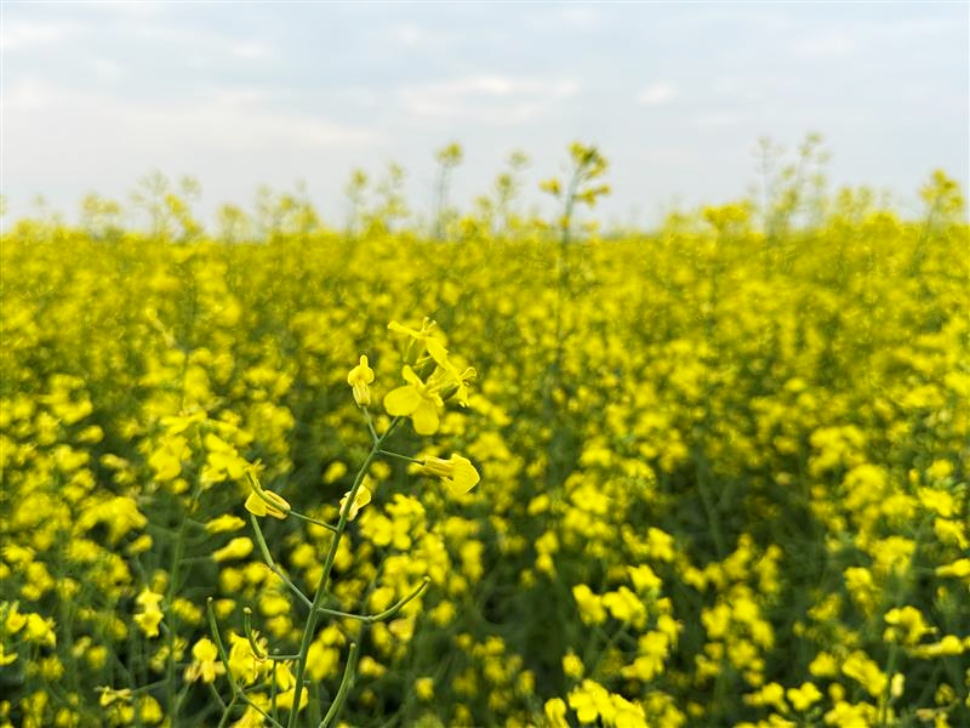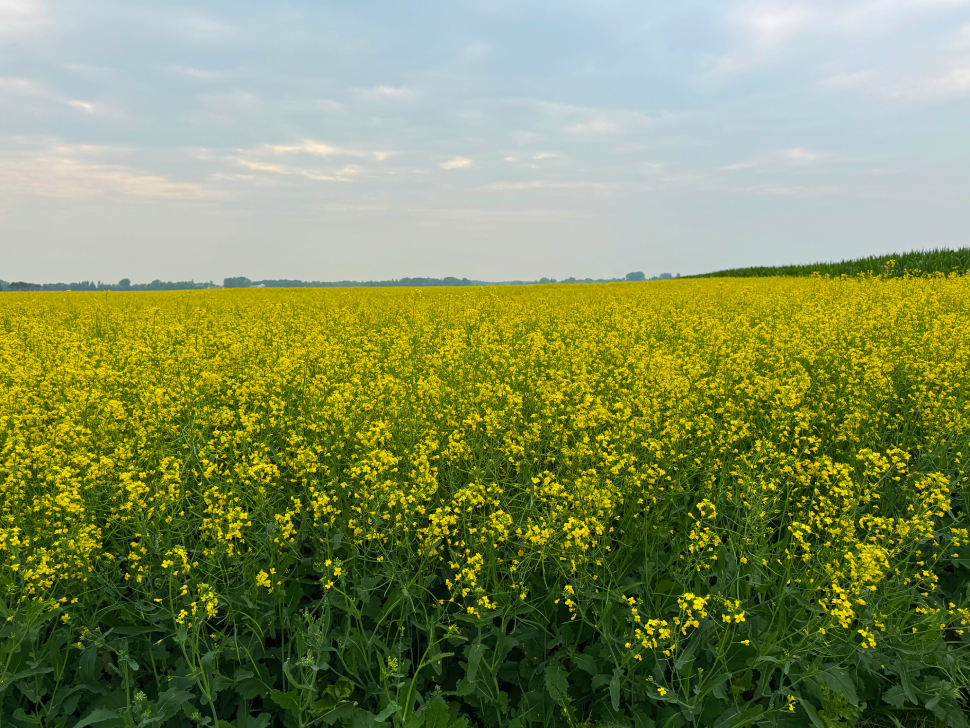Bright, yellow fields have become like crown jewels in southern Manitoba's crop-lush landscape—bursting with sun-like splendor as summer quickly plows along.
But what exactly is growing in those brilliantly golden fields? That's canola. Not only is it a visually stunning crop, but it's also critically important to Manitoba and to Canada as a whole.
How is the canola season "growing?"
Jason Kehler, a director with Manitoba Canola Growers, says the crop has been doing well this season.
"Obviously within the farming arena, there's always enough challenges that are presented to us every year. But I think the canola looks quite promising," he says.

The fields are nearly done flowering, Kehler notes, thanks in part to cooler weather.
"Flowering canola likes it cool. (Around) 25 to 27 degrees during the day, and cool evenings and nights. When our temperatures creep up over 30 (degrees), it does definitely impact flowering canola," he says.
Interestingly, he adds that recent smoke cover from wildfires has had a surprising effect: it’s actually benefitted the canola during flowering by softening the sun’s intensity. However, some crops do not thrive under the smoke, with those in the north needing more heat.
What to expect for the remainder of the season
Kehler says now it's time to wait for canola pods to fill with seed, which necessitates rain and consistent temperatures.
Those seeds will eventually be crushed to produce oil.
"We're definitely getting towards the end of the growing season and we're going to approach the harvesting window here in the next, I say, three weeks to a month," he says.
He’s feeling optimistic about both the final stretch of the season and what harvest might bring.
Canola: More than just a pretty flower
Canola is more than just a rival to sunlight. It's a very significant crop for many reasons.
"The word 'canola' actually comes from the words 'Canada' and 'ola,' meaning oil," Kehler says, adding it truly is a Canadian crop through-and-through.
In Manitoba alone, he says about 3 million acres of the crop are grown each year, with all of Canada producing around 60 per cent of the world's canola oil supply.
That's about $40 billion flowing into the Canadian economy thanks to the production, processing, and trade of canola seeds, Kehler says.
It's an especially important crop to Manitoba—where it was developed.
"It was bred and brought into the farming rotation in the late 60s and early 70s," he says, courtesy of the University of Manitoba's Baldur Stefansson and Dr. Keith Downey.
"Originally, the crop was called rapeseed, and canola was bred from rapeseed by reducing erucic acid and glucosinolates," Kehler explains.
While canola is known for its oil, he says it can be used to create biodiesel, high protein animal feed, cosmetics, pet food, and even some industrial lubricants.
"There's no waste. That's an important factor," he says.
An ode to farmers as harvest looms
Kehler says, as southeastern Manitobans take in the beauty of canola fields—or any other crop for that matter—to remember the people working in those fields.
"People need to know how passionate and hardworking farmers are," he says. "Mentally and physically, it takes a toll every year. Waiting for rain, having too much rain, cold nights, warm nights, hot weather, smoke, prices... There's a lot of things that go into raising people's food."
He says Manitobans can take pride in what's grown here.
"Here in Manitoba, farmers grow clean, healthy food for our people," Kehler says.
If you or a farmer you know is struggling with mental health, support is available through the Manitoba Farmer Wellness Program. Visit manitobafarmerwellness.ca to learn more.
